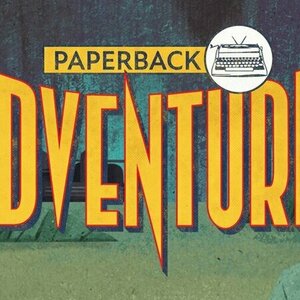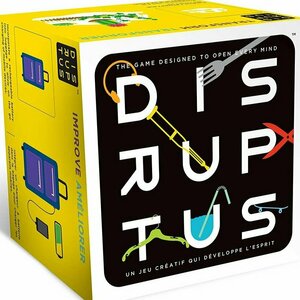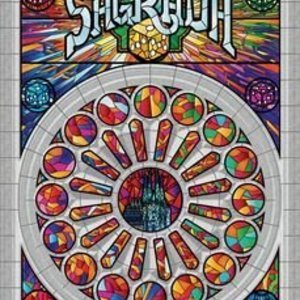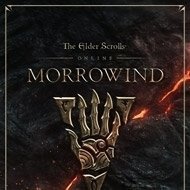Search

Paperback Adventures
Tabletop Game
Our intrepid author Paige Turner is back! In Paperback Adventures, you get to play as the...

Distruptus
Tabletop Game
Dare to think in an outrageously original manner with Disruptus, the game featured in the New York...
Solo play Creative Thinking Cooperative Competitive Dice rolling Pencil &
Purple Phoenix Games (2266 KP) rated Sagrada in Tabletop Games
Jun 12, 2019
One of the best parts of the board gaming experience is finding a fun group of people with whom to play! Sometimes, though, coordinating a game night is easier said than done. We all must occasionally forego the group experience and face the world as the Lonely Only. But fear not! The world of solo-play is a vast and exciting realm! What follows is a chronicle of my journey into the solo-playing world – notes on gameplay, mechanics, rules, difficulty, and overall experience with solo variations of commonly multiplayer games! I hope this will provide some insight as you continue to grow your collection, or explore your already owned games!
In Sagrada, you are an artist who has been tasked with creating a beautiful stained glass window. Working piece by piece, you build a masterpiece – the likes of which have never before been witnessed. Finding the perfect pieces can be tricky, but through careful use of your tools and with your artistic vision, you can create the best window in the town! The game is played over 10 rounds in which players draft dice and place them in their windows, following certain placement restrictions. A set number of tools are available for use, and can aid you in manipulating the dice to your benefit. Points are scored based on successful completion of private and public objectives, and the player with the highest score at the end of 10 drafting rounds is the winner!
My favorite part about playing Sagrada solo is that the game is essentially played the same way, regardless of player count. The only difference is how you win! In both group and solo play, each player will draft two dice every round. In group play, any leftover dice are discarded, while in solo play, the remaining two dice will be added towards the Target Score – the score you are trying to beat at the end of the game! To find the Target Score, you add all of the die values of your unused dice from each round. If, at the end of the 10 rounds, you have earned more points than the Target Score, you win! But if the Target Score is higher than your final score, you lose.
The game play differences are simple enough, but actually winning the game solo is a different story. I have played Sagrada solo quite a bit, and have won maybe 25% of the time. Depending on which window card and objectives are in play, and because of placement restrictions, I often have to sacrifice high-valued dice to the Target Score. And since there are no placement restrictions for the Target Score, and two dice are added to it each round, it is very easy for that score to sky-rocket. I either barely pull off a win, or I lose by a huge margin. Playing in a group is nicer in this regard because the other players have the same placement restrictions that I have – nobody is just getting points for free. Without the Target Score, there really is no way to play Sagrada solo, but it makes the game feel a little imbalanced to me.
Just because it is difficult to win solo does not mean that I do not like the game. It requires quite a bit of strategy, and that keeps me engaged for the entire game. There are dice placement restrictions based on color AND value, so there are two different ways in which you have to constantly be strategizing. You can’t just focus on either value or color – your strategy must always be changing based on which color dice are drawn and what values are subsequently rolled. Even with the amount of strategy required, Sagrada actually plays pretty quickly as a solo game, and I really like that. I like the challenge of this game, and often try to play until I can win. Since I can finish an entire solo game in probably 10-15 minutes, I am able to get multiple plays in a row!
Sagrada is a challenging game to play solo, but not in a way that feels futile. I don’t win a lot, but the strategic implications and the pretty dice colors are what keep me coming back to this game! If you haven’t tried Sagrada solo yet, I’d encourage you to give it a shot. But be warned – you might not always win.
https://purplephoenixgames.wordpress.com/2019/02/26/solo-chronicles-sagrada/
In Sagrada, you are an artist who has been tasked with creating a beautiful stained glass window. Working piece by piece, you build a masterpiece – the likes of which have never before been witnessed. Finding the perfect pieces can be tricky, but through careful use of your tools and with your artistic vision, you can create the best window in the town! The game is played over 10 rounds in which players draft dice and place them in their windows, following certain placement restrictions. A set number of tools are available for use, and can aid you in manipulating the dice to your benefit. Points are scored based on successful completion of private and public objectives, and the player with the highest score at the end of 10 drafting rounds is the winner!
My favorite part about playing Sagrada solo is that the game is essentially played the same way, regardless of player count. The only difference is how you win! In both group and solo play, each player will draft two dice every round. In group play, any leftover dice are discarded, while in solo play, the remaining two dice will be added towards the Target Score – the score you are trying to beat at the end of the game! To find the Target Score, you add all of the die values of your unused dice from each round. If, at the end of the 10 rounds, you have earned more points than the Target Score, you win! But if the Target Score is higher than your final score, you lose.
The game play differences are simple enough, but actually winning the game solo is a different story. I have played Sagrada solo quite a bit, and have won maybe 25% of the time. Depending on which window card and objectives are in play, and because of placement restrictions, I often have to sacrifice high-valued dice to the Target Score. And since there are no placement restrictions for the Target Score, and two dice are added to it each round, it is very easy for that score to sky-rocket. I either barely pull off a win, or I lose by a huge margin. Playing in a group is nicer in this regard because the other players have the same placement restrictions that I have – nobody is just getting points for free. Without the Target Score, there really is no way to play Sagrada solo, but it makes the game feel a little imbalanced to me.
Just because it is difficult to win solo does not mean that I do not like the game. It requires quite a bit of strategy, and that keeps me engaged for the entire game. There are dice placement restrictions based on color AND value, so there are two different ways in which you have to constantly be strategizing. You can’t just focus on either value or color – your strategy must always be changing based on which color dice are drawn and what values are subsequently rolled. Even with the amount of strategy required, Sagrada actually plays pretty quickly as a solo game, and I really like that. I like the challenge of this game, and often try to play until I can win. Since I can finish an entire solo game in probably 10-15 minutes, I am able to get multiple plays in a row!
Sagrada is a challenging game to play solo, but not in a way that feels futile. I don’t win a lot, but the strategic implications and the pretty dice colors are what keep me coming back to this game! If you haven’t tried Sagrada solo yet, I’d encourage you to give it a shot. But be warned – you might not always win.
https://purplephoenixgames.wordpress.com/2019/02/26/solo-chronicles-sagrada/
Vegas (725 KP) rated Solo: A Star Wars Story (2018) in Movies
Sep 11, 2018
Humor (2 more)
It's a Star Wars story
Action
Really Enjoyable
I love Star Wars even though I'm not a huge Sci-fi fan and I wasn't sure what to expect and wasn't sure either if anyone else could play Han Solo... To say I was happy with it would be an understatement - I thought it was brilliant. There was the perfect amount of action mixed with humor, the portrayal of Solo was spot on and could easily been a young Harrison Ford with the mannerisms and speach.
For me it added to the Han Solo character, how he came to be the person we knew and loved from the originals.
For me it added to the Han Solo character, how he came to be the person we knew and loved from the originals.

Archipelago
Tabletop Game
A 2-5 player strategy game (there is a expansion that allows solo play sold separately). Each player...
Brendan Benson recommended track Just What I Needed by The Cars in Complete Greatest Hits by The Cars in Music (curated)

How to Play Drums - Beginner Drum Lessons
Music and Entertainment
App
Learn how to play the drums the easily with this app. Learn how to play drums with easy-to-follow...
Purple Phoenix Games (2266 KP) rated Dinosaur Island in Tabletop Games
Jun 12, 2019
One of the best parts of the board gaming experience is finding a fun group of people with whom to play! Sometimes, though, coordinating a game night is easier said than done. We all must occasionally forego the group experience and face the world as the Lonely Only. But fear not! The world of solo-play is a vast and exciting realm! What follows is a chronicle of my journey into the solo-playing world – notes on gameplay, mechanics, rules, difficulty, and overall experience with solo variations of commonly multiplayer games! I hope this will provide some insight as you continue to grow your collection, or explore your already owned games!
In Dinosaur Island, you have successfully created a theme park of the Jurassic variety (see what I did there?), and are now tasked with managing and supervising the day-to-day operations. Think “Zoo Tycoon” on steroids. You have to collect new DNA, upgrade your facilities, build new attractions, hire specialists, oversee your workers, and create new dinosaurs to populate your park! Make sure you manage your resources wisely for maximum benefit, and keep a close eye on the security of your park to ensure the safety of your guests! The goal is to create and maintain the most successful dinosaur park!
DISCLAIMER: An expansion exists for Dinosaur Island, and I do own it, but I have yet to incorporate it into my games. Once I get some experience with the expansion, I will either amend this review or address it in a separate post! -L
Let me first begin this review by saying that there is A LOT going on in this game. Seriously, a lot. And it can be pretty overwhelming at first. But one thing I cannot praise enough about Dinosaur Island is its rulebook. It’s kind of hefty, but it is so detailed and clear (with numerous examples) that I understood how to play the game on my first read-through. And sometimes with games that have so many moving elements, total understanding from the get-go can be rare, for me especially. The excellent rulebook makes a seemingly daunting game not so scary. I always keep the rulebook on hand when I play (just to be safe!), but once I got the hang of all of the steps, I don’t really need to refer back to it anymore!
As a solo game, Dinosaur Island plays very similarly as it does in group play with a few minor differences. For one, no regular Objective cards are used – instead you use a set of specified Solo Objective cards. Next, to simulate player interaction during the Research and Market Phases, the solo player draws a card from an AI deck and eliminates the options/discards the resources listed on the card – this mimics group play in the sense that turn order changes every round and you do not always get your first pick during these phases. The remaining 2 Phases (Worker and Park) occur simultaneously and involve no player interaction, so those are played as normal. One final difference between group and solo play is that the solo player can choose to play without Plot Twist cards. A solo game is played over the course of 7 total rounds, and the overall goal of the game remains the same – amass the most Victory Points.
The trickiest part of playing Dinosaur Island solo, for me, has to do with the Solo Objectives. You have 7 Solo Objectives to be completed throughout the game, and they reward Victory Points based on the round in which they were completed – finishing objectives in earlier rounds yields a higher number of points. If you are unable to complete any objective in a given round, you must discard one (of your choice) at the end of that round. The hard thing is that depending on which objectives are currently in play, it can be difficult to complete one each round to earn those points. Some things take time (and a couple of rounds) to be able to complete – like “Reach a threat level of 15.” If you have multiple long-term objectives in play, they can really limit the number of points you can earn from them. A nice mix of objectives (both short-term and long-term) can help balance out the game a little more, but it’s ultimately a luck of the draw.
One positive thing I can say about the objectives, though, is that they really force you to come up with a multi-faceted strategy. Depending on which objectives are in play, you have to decide on a logical strategy and order in which to complete them for maximum points. You can’t just focus on one objective – you also need to be setting yourself up to complete future objectives. I never feel like I’m just going through the motions because I always need to be thinking ahead to my future rounds.
The thing I really like about Dinosaur Island as a solo game is that it is still extremely engaging. I’m not a huge fan of “Beat your own personal best” solo games, but this one keeps me so involved that I don’t mind the fact that there’s no real ‘winner.’ Since a group game doesn’t involve that much player interaction anyway, Dinosaur Island doesn’t really even necessarily feel like a solo game. Every play requires a different strategy, and that makes it feel like a new game every time. If you enjoy Dinosaur Island in a group setting, give it a try as a solo game. There’s really not much of a gameplay difference, and I think you’ll enjoy it just as much!
https://purplephoenixgames.wordpress.com/2019/05/21/solo-chronicles-dinosaur-island/
In Dinosaur Island, you have successfully created a theme park of the Jurassic variety (see what I did there?), and are now tasked with managing and supervising the day-to-day operations. Think “Zoo Tycoon” on steroids. You have to collect new DNA, upgrade your facilities, build new attractions, hire specialists, oversee your workers, and create new dinosaurs to populate your park! Make sure you manage your resources wisely for maximum benefit, and keep a close eye on the security of your park to ensure the safety of your guests! The goal is to create and maintain the most successful dinosaur park!
DISCLAIMER: An expansion exists for Dinosaur Island, and I do own it, but I have yet to incorporate it into my games. Once I get some experience with the expansion, I will either amend this review or address it in a separate post! -L
Let me first begin this review by saying that there is A LOT going on in this game. Seriously, a lot. And it can be pretty overwhelming at first. But one thing I cannot praise enough about Dinosaur Island is its rulebook. It’s kind of hefty, but it is so detailed and clear (with numerous examples) that I understood how to play the game on my first read-through. And sometimes with games that have so many moving elements, total understanding from the get-go can be rare, for me especially. The excellent rulebook makes a seemingly daunting game not so scary. I always keep the rulebook on hand when I play (just to be safe!), but once I got the hang of all of the steps, I don’t really need to refer back to it anymore!
As a solo game, Dinosaur Island plays very similarly as it does in group play with a few minor differences. For one, no regular Objective cards are used – instead you use a set of specified Solo Objective cards. Next, to simulate player interaction during the Research and Market Phases, the solo player draws a card from an AI deck and eliminates the options/discards the resources listed on the card – this mimics group play in the sense that turn order changes every round and you do not always get your first pick during these phases. The remaining 2 Phases (Worker and Park) occur simultaneously and involve no player interaction, so those are played as normal. One final difference between group and solo play is that the solo player can choose to play without Plot Twist cards. A solo game is played over the course of 7 total rounds, and the overall goal of the game remains the same – amass the most Victory Points.
The trickiest part of playing Dinosaur Island solo, for me, has to do with the Solo Objectives. You have 7 Solo Objectives to be completed throughout the game, and they reward Victory Points based on the round in which they were completed – finishing objectives in earlier rounds yields a higher number of points. If you are unable to complete any objective in a given round, you must discard one (of your choice) at the end of that round. The hard thing is that depending on which objectives are currently in play, it can be difficult to complete one each round to earn those points. Some things take time (and a couple of rounds) to be able to complete – like “Reach a threat level of 15.” If you have multiple long-term objectives in play, they can really limit the number of points you can earn from them. A nice mix of objectives (both short-term and long-term) can help balance out the game a little more, but it’s ultimately a luck of the draw.
One positive thing I can say about the objectives, though, is that they really force you to come up with a multi-faceted strategy. Depending on which objectives are in play, you have to decide on a logical strategy and order in which to complete them for maximum points. You can’t just focus on one objective – you also need to be setting yourself up to complete future objectives. I never feel like I’m just going through the motions because I always need to be thinking ahead to my future rounds.
The thing I really like about Dinosaur Island as a solo game is that it is still extremely engaging. I’m not a huge fan of “Beat your own personal best” solo games, but this one keeps me so involved that I don’t mind the fact that there’s no real ‘winner.’ Since a group game doesn’t involve that much player interaction anyway, Dinosaur Island doesn’t really even necessarily feel like a solo game. Every play requires a different strategy, and that makes it feel like a new game every time. If you enjoy Dinosaur Island in a group setting, give it a try as a solo game. There’s really not much of a gameplay difference, and I think you’ll enjoy it just as much!
https://purplephoenixgames.wordpress.com/2019/05/21/solo-chronicles-dinosaur-island/
Mothergamer (1601 KP) rated the PlayStation 4 version of The Elder Scrolls Online: Morrowind in Video Games
May 19, 2018
Adds a lot of good content with interesting quests and stories. I always have fun playing this with my friends whether it's exploring different areas together or just working on crafting. There's a lot to do in the game solo or with other players. I play this on the PC and Playstation 4 and have a lot of fun.





